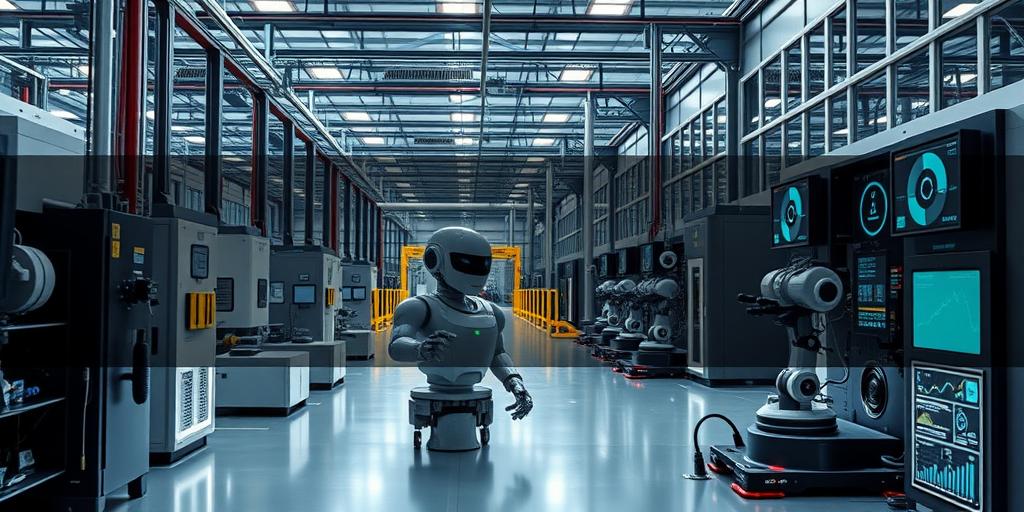The manufacturing industry is undergoing a massive transformation, driven by technological advancements and the need for greater efficiency and resilience. At the heart of this revolution lies the concept of the smart factory – a highly digitized and connected manufacturing facility that leverages data, automation, and artificial intelligence to optimize operations. This post will explore the current state and future trajectory of smart factories worldwide, highlighting key trends, benefits, and challenges.
What is a Smart Factory?
A smart factory integrates various advanced technologies, including:
- Internet of Things (IoT): Sensors and devices collect real-time data from equipment and processes.
- Artificial Intelligence (AI) and Machine Learning (ML): Algorithms analyze data to identify patterns, predict outcomes, and optimize performance.
- Cloud Computing: Provides scalable infrastructure for data storage, processing, and application deployment.
- Big Data Analytics: Enables manufacturers to extract valuable insights from large datasets.
- Robotics and Automation: Automate repetitive tasks, improving efficiency and reducing labor costs.
- Digital Twin: A virtual representation of a physical factory, allowing for simulation and optimization.
Global Adoption of Smart Factories
North America:
The United States and Canada are at the forefront of smart manufacturing, driven by a strong technology sector and a focus on innovation. Initiatives like the Smart Manufacturing Leadership Coalition (SMLC) are promoting collaboration and standardization.
Europe:
Germany, with its “Industrie 4.0” initiative, is a leader in smart factory adoption. Other European countries, such as France and the UK, are also investing heavily in digital manufacturing technologies.
Asia-Pacific:
China is rapidly catching up, with substantial investments in automation and AI. Japan and South Korea are also key players, leveraging their expertise in robotics and electronics. Southeast Asian countries like Singapore and Thailand are increasingly adopting smart manufacturing to enhance their competitiveness.
Benefits of Smart Factories
- Increased Efficiency: Automation and optimization reduce waste and improve throughput.
- Enhanced Productivity: Real-time data and analytics enable better decision-making and resource allocation.
- Improved Quality: Predictive maintenance and quality control systems minimize defects.
- Reduced Costs: Optimized processes and resource utilization lower operational expenses.
- Greater Flexibility: Agile manufacturing systems allow for rapid response to changing market demands.
- Enhanced Safety: Automated systems reduce the risk of workplace accidents.
Challenges and Considerations
- Security Risks: Increased connectivity exposes factories to cyber threats.
- Skills Gap: Implementing and managing smart factory technologies requires specialized skills.
- Integration Complexity: Connecting disparate systems and devices can be challenging.
- High Initial Investment: Implementing smart factory technologies can be expensive.
- Data Privacy: Collecting and analyzing data raises privacy concerns.
The Future of Smart Manufacturing
The future of manufacturing is undoubtedly smart. As technologies continue to evolve and become more accessible, smart factories will become the norm rather than the exception. We can expect to see:
- More advanced AI and ML algorithms: Enabling greater automation and optimization.
- Greater use of digital twins: For simulation, testing, and training.
- Increased adoption of cloud computing: For scalable and cost-effective data management.
- More collaborative robots (cobots): Working alongside humans to perform complex tasks.
- Greater emphasis on sustainability: With smart factories optimizing energy consumption and reducing waste.
Conclusion
Smart factories represent the future of manufacturing, offering unprecedented opportunities to improve efficiency, productivity, and sustainability. While challenges remain, the benefits of embracing digital transformation are clear. As companies continue to invest in smart manufacturing technologies, we can expect to see a more resilient, agile, and competitive manufacturing sector emerge.
